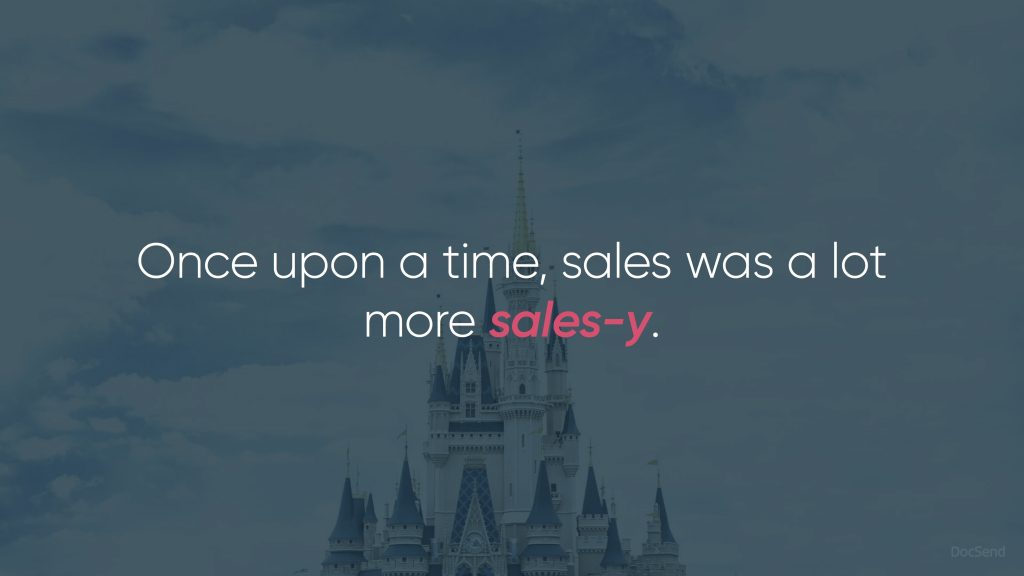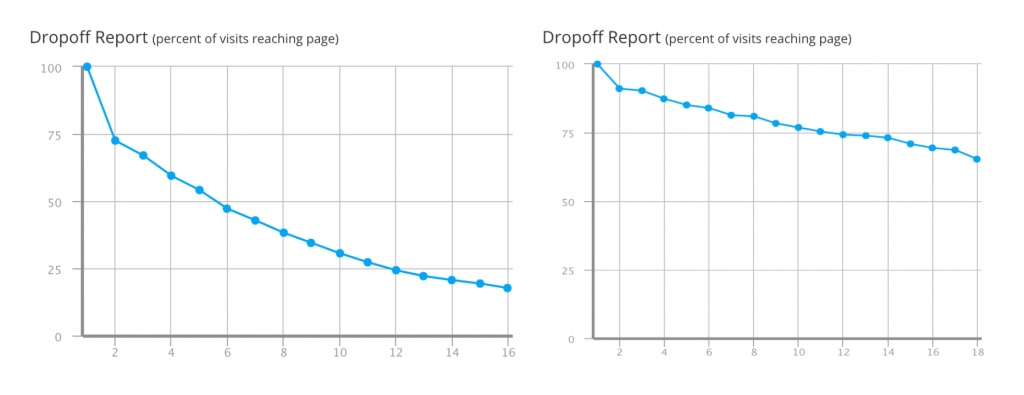Effective marketing hinges on leveraging data to better target customers, especially for highly nuanced B2B audiences. The trouble is, this advice is often absorbed with superficiality.
Business leaders and marketers alike cherry-pick just a few datapoints or customer anecdotes to build idealistic personas around. From there they design their messaging, often keeping it broad in hopes of casting a wider net. Little do they realize that doing so can actually make customer acquisition more costly.
The reality: assumptions and anecdotes make for inefficient marketing, as you may wind up with buyers who aren’t a good fit for your offering. That translates to wasted sales and marketing resources in the long run.
For more efficient growth, your targeting and messaging must be backed by relevant and timely data. Failing to do so puts a ceiling on your profitability. Let’s explore the latter in more depth—specifically how you can use data-driven storytelling to create more meaningful content.
What is data-driven storytelling?
The term “data-driven storytelling” may sound paradoxical, seeming to prioritize science over creativity. But don’t be misled: it’s the synthesis of art and science that makes for truly impactful data-inspired stories.
Let’s start by defining data-driven storytelling. This describes content with two key elements:
-
- It has a narrative arc. This often boils down to the hero’s journey—the common pattern observed by Joseph Campbell in which a hero embarks on an adventure and returns home transformed.
- It’s informed by patterns uncovered through data about your buyers and customers. That might be structured data from your product analytics or CRM, as well as unstructured data from in-depth interviews, support requests, review sites, and so on. Either way, data is the backbone that gives context for the story in the first place.
But why use stories at all?
Simply put, they captivate. They’re more compelling and memorable than listing raw numbers and statistics.
And when it comes to sales and marketing, stories created purely based on gut feeling often miss the meaningful substance that speaks to your best-fit buyers. In other words, without data, stories lack a persuasive edge.
As business advisor and angel investor Dave Kellogg writes, where you fish—your targeting—is only half the battle. The other half is using the right bait. That’s your messaging, or in this case, the story you tell potential buyers.
DocSend: an example of successful data-driven storytelling in B2B tech
The SaaS tool DocSend (acquired by Dropbox in 2021) helps companies securely share important documents with partners and stakeholders. Early on, to win over customers, its sales team created more than eight sales decks.
This wasn’t deliberate. Their original core deck had spawned new variations over time with the intention of targeting distinct buyer personas. Yet despite targeting different personas, the decks were only superficially different: they all focused heavily on DocSend’s features and had somewhere between 16-20 slides.
The result: disappointing engagement across the board. According to DocSend’s analytics, less than 18% of prospects who opened one of the decks actually made it to the last slide.
So DocSend’s sales and marketing teams got to work. They overhauled their decks and focused on creating a narrative based on their ideal customer’s pain points and priorities. The goal was to not only showcase DocSend’s value but relate it to their buyers’ specific challenges.
In true story fashion, the new deck even opened with “Once upon a time.”

And unlike the old deck that showed customer logos and listed product features back to back, the new deck spelled out prospects’ circumstances. It positioned prospects as the story’s hero and gave context for their challenges, including relevant datapoints. Then it introduced DocSend as a tool to help spur meaningful transformation.
How did the story-based deck affect engagement?
After implementing the new sales deck, more than 65% of all leads who viewed it made it to the last slide. That happened even in spite of the new deck being two slides longer.

And besides engaging more prospects, DocSend saw a 38% jump in conversions between the decks—a clear sign that integrating a story into their messaging had paid off.
How to create meaningful stories from your data
According to marketing executive and author Ann Handley, stories reveal three truths:
-
- they help the reader understand the writer (or brand);
- they help the reader see themselves;
- and they deliver an “a-ha” moment—one that usually revolves around how your brand benefits readers.
Using these three truths as guideposts, remember that data provides the context for what story needs to be told in the first place. If your customer is your hero, what are the challenges they face? And how does your company help overcome them?
Below, we outline five steps to approach the storytelling process with the support of data.
1. Define your target buyers with precision
When it comes to identifying your ideal customer, Growth Velocity founder Willem Mass observes, “Most marketers rely on 1970s-era direct marketing strategies that target based on firmographics and create messaging based on anecdotes. They didn’t have good data. But now we can be more precise—and efficient—by combining qualitative, unstructured data about our buyers with structured data from B2B databases.”
To avoid defining your ideal customer profile (ICP) and buyer personas on hunches and anecdotal evidence, a win/loss analysis (defined here) is a must. By interviewing recent buyers in both closed-won and closed-deal opportunities, these analyses illuminate your best-fit buyers with more precision than bad CRM data or intuition can provide.
2. Analyze your data
Win/loss analyses reveal the attributes of your best-fit buyers as well as the key factors influencing their decision-making. Look for patterns, trends, and correlations in this data. These are the insights with which you’ll shape your narrative and make your content more meaningful.
3. Ideate potential narratives
Use your uncovered insights to outline potential story ideas that speak to your target segments.
Note that each segment may require its own unique messaging, so you should prioritize which narratives to focus on based on your segments’ win rates. Additionally, you should test your story ideas to make them more resonant with buyers.
4. Craft your story
This is where your story comes alive. Before you dive into creation, though, consider what format best suits your story—does pure text suffice or do you need supporting visuals? What about audio or video?
Move forward accordingly. Whether you work with an in-house content creator or outsource, be sure to outline the key elements of your story: the context for it and what transformation buyers hope to see.
5. Iterate on your story as needed
You’ve come up with a narrative, pushed it through editorial review, and finally, it’s published. Now comes the time to monitor your story’s performance.
The right metrics to track will depend on where exactly the content fits into your marketing funnel. In DocSend’s case, for example, the sales deck was measured by conversions of leads into opportunities. But for a piece of content occurring earlier in the funnel, you might turn to indicators like traffic to your site or the number of product demos requested.
Analyze the results to gauge how well your story resonates with your target segments. Then use this data to optimize and refine your story.
Conclusion
Your marketing efforts will only go so far with 1970s-era targeting and messaging built around poor or outdated data about your audience. Without meaningful and reliable data, your content simply won’t resonate—making your marketing far less efficient at converting prospects into actual buyers.
That’s where data-driven storytelling shines. By grounding your content in meaningful data, you’ll better speak to your buyers’ needs and priorities.
Related Posts
Win/Loss Analysis Reports: 3 Things You’ll Learn
Which aspects of your product offering and buying experience are helping drive sales? And which aspects are hindering sales? This is what enterprise and mid-market software companies often struggle to understand. A good win/loss analysis report will provide the answers to these questions.
Three Reasons Sales Leaders Want Even More Data About Their Buyers
While B2B sales teams are literally swimming in data, it’s not enough. Data-driven sales leaders are using input directly from buyers to find new ways to improve win rate and lead with conviction.
Data Driven Targeting And Messaging Increases Profitability
Sales and marketing are typically the largest area of spend for an expansion stage company. Marketing leaders can support increased profitability by reassessing who the strongest buyers are, and developing innovative and data driven ways to target them.




